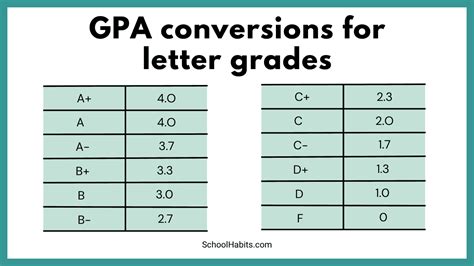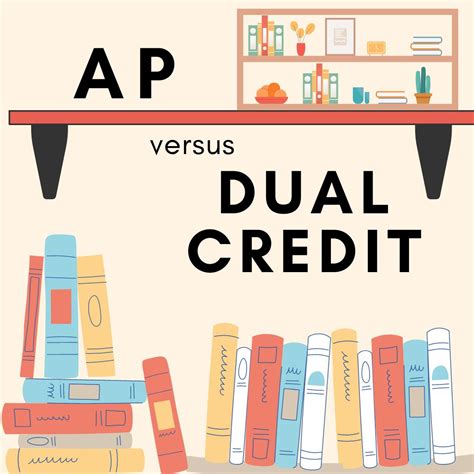Introduction: Navigating the Complexities of College Preparation

As high school students embark on the arduous journey of college preparation, they must navigate a complex maze of educational options designed to enhance their academic prowess and boost their chances of collegiate success. Two prominent pathways that have gained significant traction in recent years are Advanced Placement (AP) courses and dual credit programs. While both aim to provide a rigorous and challenging educational experience, they possess distinct characteristics that cater to specific student needs and aspirations.
This comprehensive guide will delve into the intricate details of AP courses and dual credit programs, meticulously examining their similarities, differences, and implications. By equipping students, parents, and educators with a thorough understanding of these pathways, they can make informed decisions that align with their individual goals and aspirations.
Chapter 1: Unveiling the Nature of AP Courses
1.1 What are AP Courses?
Advanced Placement courses are a rigorous academic program designed by the College Board, a non-profit organization dedicated to connecting students to college success. These courses are structured to mirror college-level coursework and culminate in an end-of-course exam administered by the College Board. Students who perform well on these exams may earn college credit or advanced placement in college, potentially saving them time and money while pursuing their higher education.
1.2 Benefits of AP Courses:
- College-Level Preparation: AP courses provide students with an unparalleled opportunity to experience the rigors and expectations of college-level coursework while still in high school. This exposure not only enhances their academic abilities but also fosters their intellectual curiosity and critical thinking skills.
- College Credit: By performing well on AP exams, students can earn college credit, allowing them to potentially skip introductory-level courses in college and progress more quickly towards their degree. This can save them both time and money, potentially reducing the overall cost of their higher education.
- Competitive Advantage: Students who successfully complete AP courses and exams demonstrate a high level of academic achievement and a commitment to intellectual pursuits. This can enhance their competitiveness when applying to selective colleges and universities, increasing their chances of gaining admission to their dream schools.
1.3 Considerations for AP Courses:
- Rigor and Workload: AP courses are designed to be challenging and require a significant amount of work and dedication. Students should carefully consider their academic abilities and time constraints before committing to an AP course load.
- Exam Costs: AP exams carry a significant cost, which can be a financial burden for some families. Students should be aware of these costs and factor them into their decision-making process.
Chapter 2: Exploring the Nuances of Dual Credit Programs
2.1 What are Dual Credit Programs?
Dual credit programs are collaborative partnerships between high schools and colleges or universities that allow high school students to enroll in college-level courses while still in high school. These courses are typically taught by college professors and carry both high school and college credit. Students who successfully complete these courses earn credit towards both their high school diploma and their college degree.
2.2 Benefits of Dual Credit Programs:
- College Credit: Dual credit programs provide students with the opportunity to earn college credit while still in high school, allowing them to make significant progress towards their college degree. This can save them both time and money in the long run.
- College Experience: Dual credit programs offer students a taste of college life, allowing them to interact with college professors, participate in college-level discussions, and experience the rigors of college-level coursework.
- Reduced College Costs: By earning college credit in high school, students can potentially reduce the overall cost of their college education by minimizing the number of semesters they need to complete in college.
2.3 Considerations for Dual Credit Programs:
- Availability: Dual credit programs may not be offered at all high schools or in all subject areas. Students should research the options available at their high school and consult with their guidance counselors to determine if dual credit is a viable option.
- Cost: While dual credit programs can save students money in the long run, they often come with additional costs, such as tuition fees, textbooks, and transportation. Students should factor these costs into their decision-making process.
Chapter 3: Comparing AP Courses and Dual Credit Programs
3.1 Key Similarities:
- Both AP courses and dual credit programs provide students with challenging and rigorous academic experiences that can prepare them for college-level coursework.
- Both options offer the potential to earn college credit while still in high school, potentially saving students time and money in the long run.
- Both pathways demonstrate a high level of academic achievement and a commitment to intellectual pursuits, which can enhance students’ competitiveness when applying to selective colleges and universities.
3.2 Key Differences:
- Governance: AP courses are administered by the College Board, while dual credit programs are collaborative partnerships between high schools and colleges or universities.
- Course Structure: AP courses are typically one year in length and culminate in an end-of-course exam, while dual credit courses vary in length and follow the academic calendar of the college or university offering the course.
- Grading: AP courses are graded on a scale of 1 to 5, while dual credit courses are graded on a traditional letter grade scale.
- Credit Transfer: AP exam scores can be used to earn college credit at many colleges and universities, while dual credit courses automatically transfer to the college or university offering the course.
3.3 Choosing the Right Pathway:
The decision between AP courses and dual credit programs ultimately depends on the individual student’s goals, aspirations, and circumstances. Students who are seeking a challenging academic experience and the potential to earn college credit should consider AP courses. Students who are interested in getting a head start on their college degree and experiencing college life firsthand should consider dual credit programs.
Chapter 4: Frequently Asked Questions
4.1 Which pathway is more rigorous?
Both AP courses and dual credit programs are designed to be rigorous and challenging. However, the level of rigor can vary depending on the specific course and the institution offering it. Students should carefully research the courses they are considering and consult with their teachers and guidance counselors to determine the level of rigor that is appropriate for them.
4.2 Which pathway is more cost-effective?
The cost of AP courses and dual credit programs can vary depending on the specific course and the institution offering it. AP exams carry a significant cost, while dual credit programs often come with additional costs, such as tuition fees, textbooks, and transportation. Students should factor these costs into their decision-making process.
4.3 Which pathway offers more flexibility?
AP courses are typically offered at high schools, while dual credit programs may not be offered at all high schools or in all subject areas. Additionally, AP courses are one year in length, while dual credit courses vary in length. Students should consider their individual schedules and academic goals when choosing the pathway that offers the most flexibility.
4.4 Which pathway is better for students who are not sure what they want to study in college?
Both AP courses and dual credit programs can provide students with a broad exposure to different subject areas, allowing them to explore their interests and discover potential career paths. Students who are not sure what they want to study in college may benefit from taking a variety of AP courses or dual credit courses in different subject areas.
4.5 Which pathway is better for students who want to attend a highly selective college?
Both AP courses and dual credit programs can demonstrate a high level of academic achievement and a commitment to intellectual pursuits, which can enhance students’ competitiveness when applying to selective colleges and universities. However, some colleges and universities may place more weight on AP courses, while others may place more weight on dual credit courses. Students should research the admissions criteria of the colleges and universities they are interested in to determine which pathway is more advantageous.
4.6 Can I take both AP courses and dual credit courses?
Yes, students can take both AP courses and dual credit courses. However, it is important to carefully manage their time and workload to ensure they can successfully complete both types of courses. Students should consult with their guidance counselors and teachers to determine the best course load for them.
Conclusion
The decision between AP courses and dual credit programs is a complex one that requires careful consideration. By understanding the similarities and differences between these two pathways, students can make informed decisions that align with their individual goals and aspirations. Whether they choose AP courses, dual credit programs, or a combination of both, students who challenge themselves with rigorous and challenging academic experiences will be well-prepared for the rigors of college and beyond.
Tables
Table 1: Comparison of AP Courses and Dual Credit Programs
| Feature | AP Courses | Dual Credit Programs |
|---|---|---|
| Governance | College Board | Collaboration between high schools and colleges/universities |
| Course Structure | One year in length, culminating in an end-of-course exam | Vary in length, follow college/university academic calendar |
| Grading | 1-5 scale | Traditional letter grade scale |
| Credit Transfer | AP exam scores used for college credit | Credits automatically transfer to college/university offering the course |
Table 2: Benefits of AP Courses and Dual Credit Programs
| Pathway | Benefits |
|---|---|
| AP Courses | College-level preparation, potential for college credit, competitive advantage |
| Dual Credit Programs | College credit while in high school, college experience, reduced college costs |
Table 3: Considerations for AP Courses and Dual Credit Programs
| Pathway | Considerations |
|---|---|
| AP Courses | Rigor and workload, exam costs |
